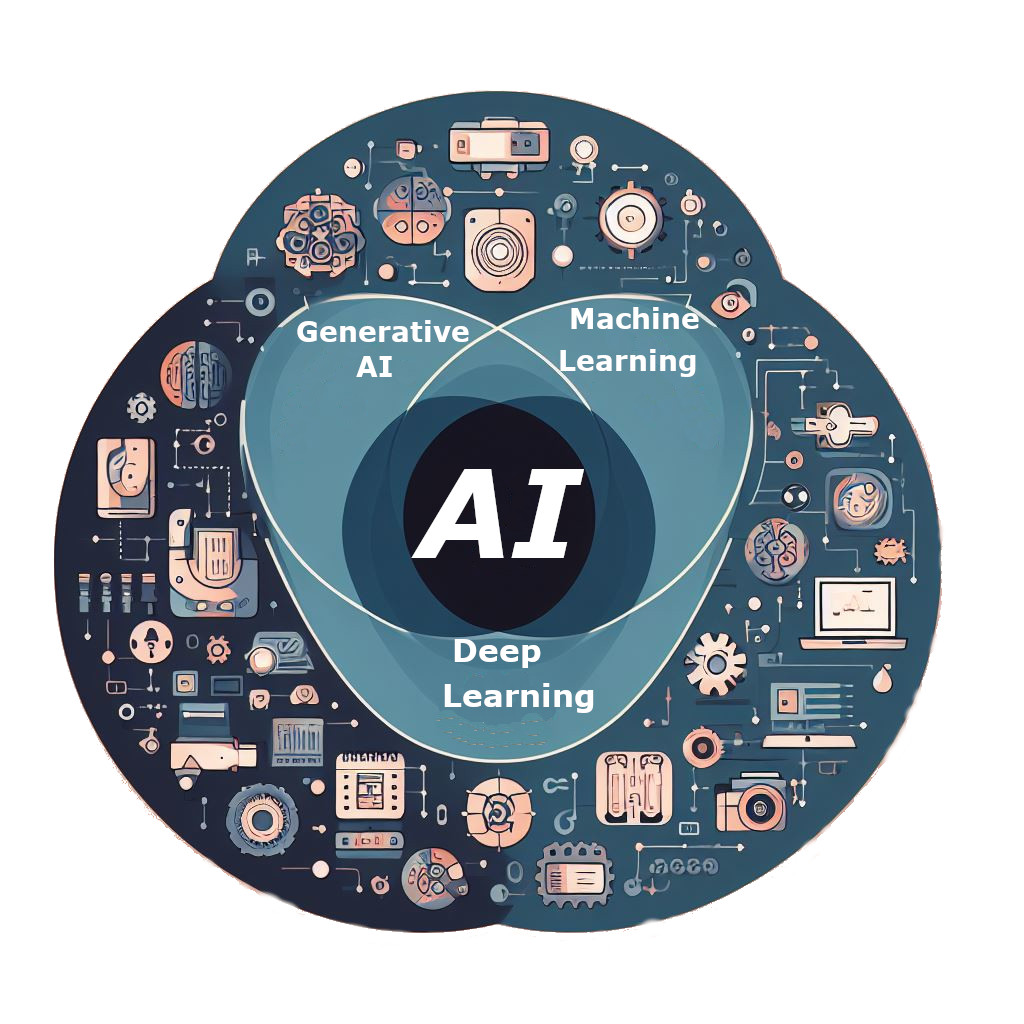How AI Can Help Small Businesses Thrive

There is a buzz or a frenzy depending on your perspective on the use of Generative AI by all the large corporate behemoths and as a result, a surge in the field of Artificial Intelligence (AI). This is no storm in a teacup but rather a technological revolution that is reshaping industries, economies, and societies, respectively. It is transforming how businesses operate and engage with customers. The very large corporations have been at the fore and making a tangible impact since OpenAI released ChatGPT in November 2022. Once only accessible to tech giants, AI tools are now available for small businesses as well. In this blog post, we try and explore ways and means that medium and small enterprises can also reap the fruit of this transformative technology and serve their customers better with improved productivity and efficiency.
Getting the basics right:
To understand the AI boom, we need to get acquainted with some key definitions:

Artificial Intelligence (AI)
It is a branch of computer science that deals with the development of intelligent machines that can perform tasks that typically require human intelligence. It encompasses various capabilities, including learning, decision-making, understanding natural language, and even playing games, all aimed at replicating human-like intelligence. AI is a broad field that encompasses several subfields, including machine learning, deep learning, and generative AI.Machine Learning
It is a subset of AI that involves training algorithms to learn from data and make predictions or decisions without being explicitly programmed. Think of it as showing a vision computer several pictures of a lion and an antelope until it can distinguish between them on its own. It is used in various applications such as image recognition, natural language processing, and predictive analytics.Deep Learning
It is a subset of machine learning that involves training artificial neural networks to learn from large amounts of data. It is used in various applications such as speech recognition, image recognition, and natural language processing.Generative AI
It is a subset of AI that involves using machine learning algorithms to generate new content such as images, music, and text. It learns from existing data and uses that information or knowledge to generate unique and novel outputs. It is used in various applications such as content creation, art, and music.How Small Businesses Can Apply AI:
AI has many practical applications for small businesses across all industries:Chatbots for customer service
- Chatbots leverage natural language processing to understand customer queries and provide quick answers without human agents. Customized chatbots can also provide 24/7 customer support, enhancing customer satisfaction and reducing the workload on support teams with great cost savings to boot.Content Creation
- AI can assist in generating captivating content for websites, blogs, social media, etc. It helps produce relevant content quickly, freeing up time for other tasks.Visual Design
- It can generate graphics, logo, and social media posts that align seamlessly with the brand's identity, ensuring consistency and serving timePredictive analytics
- By analyzing sales data and external factors, AI can generate demand forecasts and identify business risks ahead of time. This supports better planning.Personalized Marketing Campaigns
- Based on specific customer information, you can leverage Generative AI to create personalized marketing material, enhancing customer engagement and relevance (emails, product recommendations, ads, etc.). Language Translation and Localisation - AI provides accurate translation and localization services, expanding into new markets effectively
Automation
- Tedious administrative tasks like data entry can be fully automated using robotic process automation (RPA). This boosts productivity.
Fraud detection
- AI pattern recognition makes it easier to identify fraudulent transactions, suspicious logins, and cyber-attacks before they impact your business.
Key Benefits:
Implementing AI delivers many advantages that level the playing field for medium and small businesses:
-Reduced costs - AI software automates manual processes to cut labor, human error risks, and overhead expenses.
- Improved efficiency - Intelligent algorithms work around the clock without rest to boost workflow efficiency.
- Enhanced customer experience - Hyper-personalized interactions and timely issue resolution increases customer satisfaction.
- Deeper insights - Broad data analysis reveals subtle trends small businesses can capitalize on.
- Competitive edge - Small companies can act nimble and lean on AI-driven insights to outmaneuver bigger but slower competitors.
The bottom line is AI can be a game changer for small businesses. The technology is becoming more accessible through user-friendly tools offered by tech startups and many other platforms. With the right strategy, small businesses can use AI to maximize value for customers and outperform the competition.
Conclusion:
Generative AI is transforming the ways of executing work and, therefore, productivity not just for big organizations but also for small and medium-sized enterprises. While challenges and misconceptions still exist, they offer immense potential for innovation, efficiency, and growth. Its core technologies like machine learning, predictive analytics, and chatbots are no longer exclusive to large enterprises. Small businesses can now take advantage of AI capabilities to work smarter, gain strategic advantages, and deliver exceptional customer experiences. By automating repetitive tasks and generating data-driven insights, AI allows small teams to accomplish more. Small and medium-sized businesses that embrace AI with a clear strategy and a commitment to adapt will be better positioned to thrive in this AI-powered era.
Watch The Video
How AI Can Help Small Businesses Thrive
------------------------------------------------
Leave your Comment
View Comments - currently 2
